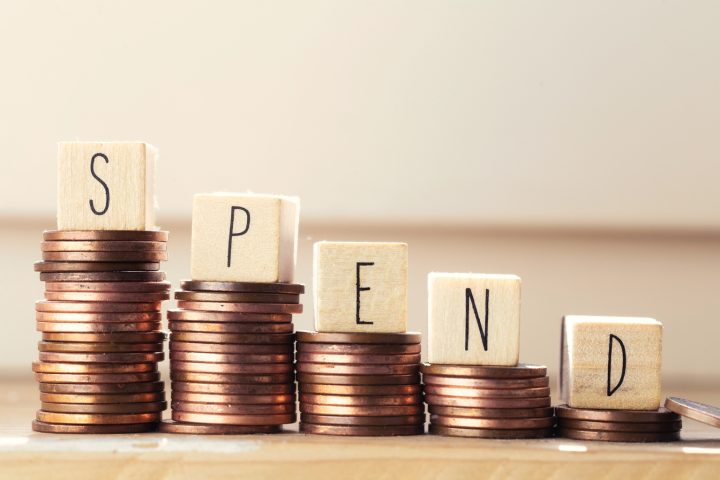If you ask financial pros for a list of money no-no’s, “keeping up with the Joneses” might just top the list.
That’s because treating money management as a competition with your peers is one of the easiest ways to get into financial trouble. A purchase that may be well within a friend’s budget could end up putting you in debt. An investment that is well within their tolerance for risk could be completely inappropriate for yours.
Advisors may disagree on how you should allocate your assets, but they’ll virtually all agree on one thing: You need to manage your money to meet your personal goals, and your goals alone.
Still, when you’re saving for something that’s decades away, such as retirement, it’s easy to feel like you’re not doing enough or that you’re falling behind without some context. Even if you’re not doing as well as you’d like, you may be doing better than most.
Among the millions of retirement savers who hold accounts at Fidelity, the median 401(k) balance was $28,900 as of the first quarter of 2024, according to data the brokerage provided. That number may skew a little low, since many investors have multiple, small accounts from past employers.
The average balance was $125,900 — a figure which may skew a little high given that gigantic accounts can pull up the mean, and older savers have had more time for money in their accounts to accumulate than younger investors.
Here’s how it breaks down by age.
20s
- Median: $6,700
- Average: $17,700
30s
- Median: $22,100
- Average: $56,200
40s
- Median: $41,600
- Average: $124,400
50s
- Median: $64,300
- Average: $212,400
How to catch up if you’re behind
If you have more than the average accountholder or the average saver in your age bracket, take a moment to feel good about yourself. But remember, you’re running your own race. You may be ahead or behind schedule depending on how much income you’re hoping your portfolio will generate in retirement.
As a rule of thumb, Fidelity recommends retirement savers have the equivalent of their annual salary stashed away by age 30, three times their salary by age 40 and six times their salary by age 50. By age 60, you should look to have eight times your salary saved in the hopes of having 10 times your salary saved by age 67.
Those numbers are potentially scary, but if you’re behind, you have time to catch up. Here are three ways financial planners say you can get things back on track — and one tempting strategy to avoid.
Automate your savings
If you’ve had difficulty stashing away enough money for retirement, one way to make things easier is to put your savings on autopilot.
“Set up automatic contributions to your retirement accounts from your paycheck or bank account,” says Ashton Lawrence, a certified financial planner with Mariner Wealth Advisors in Greenville, South Carolina. “Automating savings ensures consistency and discipline, making it easier to stick to your retirement savings goals.”
Escalate your contributions
Once you have your contributions automated, set them to increase by a certain amount or percentage each year. Doing so will allow you to up your savings rate while minimizing the sting of actively putting more money aside.
“Setting your contribution to automatically escalate over time is one of the most effective strategies for boosting retirement savings,” says Alyson Basso, a CFP with Hayden Wealth Management in Middleton, Massachusetts. “This approach ensures that you’re consistently increasing your contributions as your income grows, without requiring ongoing manual adjustments.”
Take full advantage of a match
If you’re not already, be sure to contribute enough to a workplace retirement plan to receive any matching contributions your employer may offer.
If your employer matches you dollar-for-dollar in your 401(k) up to a certain percentage of your salary, everything you contribute up to that threshold theoretically earns a 100% return.
It’s “essentially free money that can significantly boost your retirement savings,” says Basso. “It’s like receiving an immediate return on your investment, and failing to capitalize on this benefit means leaving valuable retirement funds on the table.”
Don’t take on extra risk
One way to boost the number in your account is to earn higher returns on your investments. Sure, you can expect to earn healthy returns on a well-diversified stock portfolio over the next few decades, but couldn’t you earn more betting it all on one hot stock or cryptocurrency?
Maybe — but you also vastly increase the chances of major losses that could permanently cripple your retirement plan.
“Going further out on the risk curve for stronger returns, without considering the downside, can destroy a future,” says Andrew Herzog, a CFP with The Watchman Group in Plano, Texas. “Don’t treat your retirement savings like Vegas and go all in on something. Usually it’s the boring investments that can get you to your goal.”
Want to be a successful, confident communicator? Take CNBC’s new online course Become an Effective Communicator: Master Public Speaking. We’ll teach you how to speak clearly and confidently, calm your nerves, what to say and not say and body language techniques to make a great first impression. Sign up today and use code EARLYBIRD for an introductory discount of 30% off through July 10, 2024.
Plus, sign up for CNBC Make It’s newsletter to get tips and tricks for success at work, with money and in life.
Read the full article here






